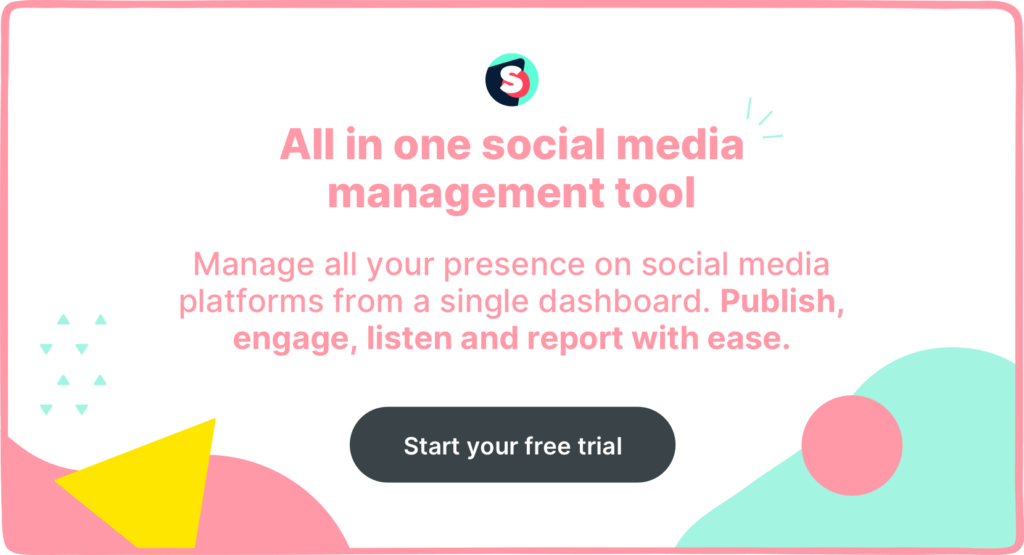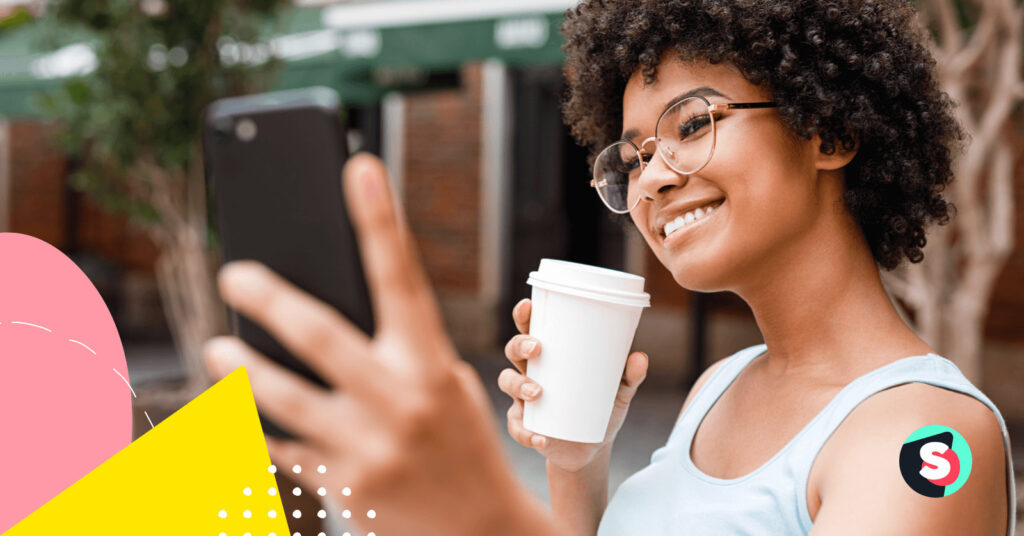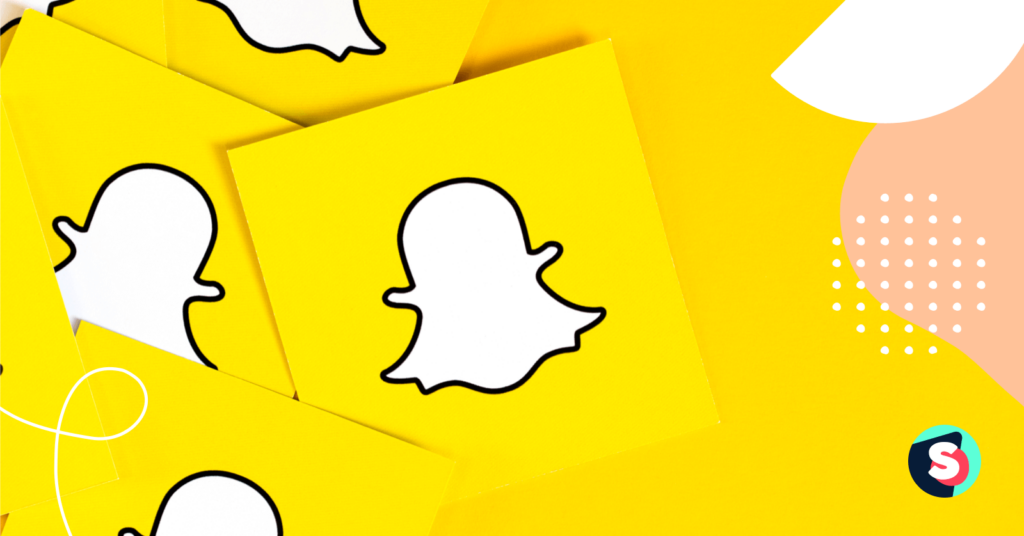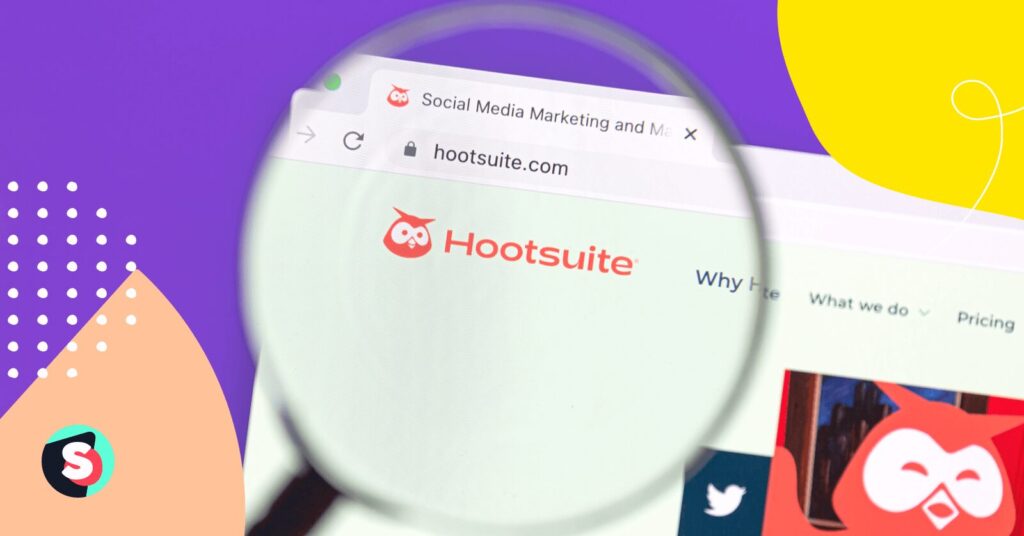Summarize this article via
The recent rise in UGC creators has made User-generated content (UGC) the talk of the town once again on social media. And it’s hardly surprising.
UGC is a pretty foolproof way for brands to increase their growth and drive online sales. The numbers speak for themselves: 87% of brands currently share authentic UGC with their customers.
Why? Because UGC is the digital equivalent of word-of-mouth referrals. Having reliable sources vouch for your brand and share authentic reviews inspires trust.
Indeed, research shows that 92% of customers look for reviews and recommendations from existing customers.
User-generated content not only builds brand trust, but it’s also a powerful asset for engaging your customers and fostering a deeper connection with them.
So, how can your business capitalize on UGC marketing? We break down everything you need to know about UGC, including how to integrate it into a social media strategy.
What is UGC (aka User-Generated Content)?
So, what is UGC?
Let’s start with the basics. UGC stands for user-generated content. In essence, UGC is content that is created by your brand’s followers or customers and shared by your brand on its own social media channels.
It’s important to point out that UGC is organically created content, meaning users are not paid to produce it. That’s the main difference between UGC and standard influencer marketing.
With UGC, the idea is that the content is honest and authentic. Whether it’s a review, recommendation, image, or mention, it should be genuine and brand-specific.
While brands are undoubtedly more than happy to share the UGC, they play no part in its creation. That said, many brands will reach out to their fans to request user-generated content.
User-generated content isn’t always in the form of reviews or recommendations (although this is a popular format). It can be as simple as a user tagging a brand or product in their Instagram story, feed post, or latest TikTok.
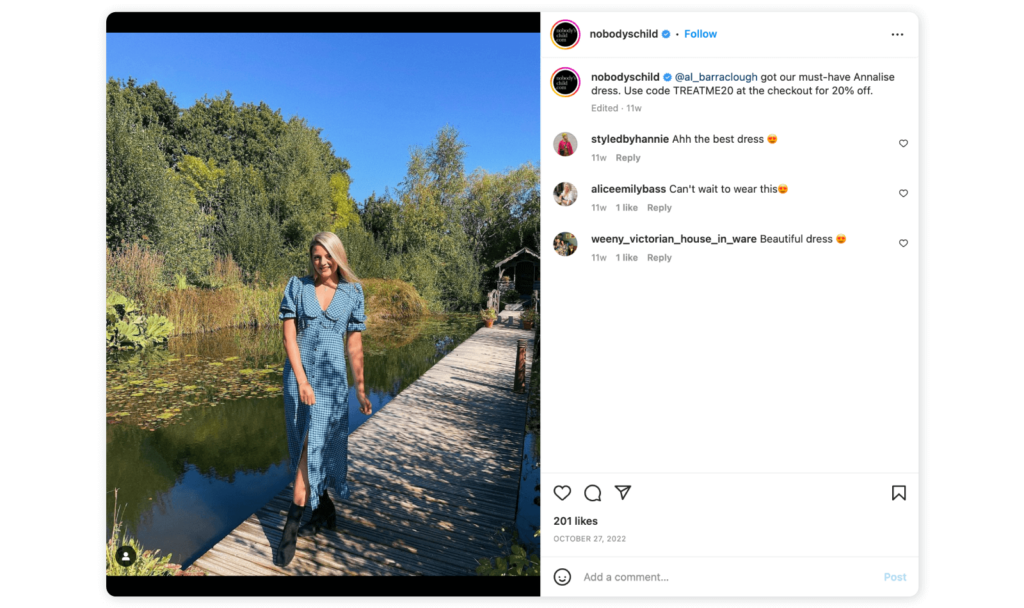
Where does UGC content come from?
There are lots of ways to find UGC content in the wild. Here are the most common sources.
Customers
Your customers are your top source for UGC. From tagging your products on Instagram to sharing unboxing videos, they are the most reliable way to integrate UGC into your social media strategy. Some brands ask their customers to share their own UGC, and some do it organically. Either way, it’s a win-win for your brand.
Fans of the brand
Your brand loyalists are your biggest fans. They love your brand and rave about your products. Naturally, that makes them very effective advertising for your business. It makes sense, then, to reach out to your biggest advocates and ask for UGC content, for example, product reviews or tagged images.
Employees
Nobody knows your brand’s story like your employees. And that’s precisely why employee-generated content (EGC) is such a powerful asset. Customers love seeing employees’ behind-the-scenes content, like a day in the life of a staff member or photos of workers making up orders.
EGC showcases your values and presents you as an authentic brand that treats its employees well. So, what are you waiting for? Ask your employees to get their thinking caps on; there’s content to be created!
UGC creators
Let’s start by clarifying the difference between UGC and a UGC creator. Put simply; the difference is money.
UGC creators are paid to create sponsored content that looks like authentic UGC. The content they create is specifically designed to promote a brand or product and is not technically organic content. The content is then shared across the brand’s socials.
Interestingly, unlike social media influencers and micro-influencers, UGC creators don’t need to build a large following to start promoting brands. Since the content is posted on the brand’s accounts, UGC creators can land brand deals almost straight away.
They are essentially freelance content creators that make a specific type of content that emulates UGC.
Types of User-Generated Content
User-generated content comes in many different shapes and sizes. Here are some popular types of UGC.
- Images (tagged photos on Instagram, reels, or TikTok)
- Videos (unboxing, product reviews, mentioning products, etc.)
- Tweets
- Mentions on Instagram, Facebook, or TikTok
- Blog posts (reviews, mentions, etc.)
- Case studies
- Testimonials
- Live streams
Basically, UGC is any type of social media content that spotlights your brand.
Best examples of User-Generated Content
We’re firm believers in standing on the shoulders of giants. So, we’ve put together a few of our favorite examples of user-generated content to inspire you. These brands are leading the way when it comes to harnessing UGC.
Go Pro
Everybody take note. The sports camera brand GoPro is giving a masterclass in leveraging UGC. GoPro’s Instagram feed is packed with high-quality UGC that perfectly represents the brand.
How does it do it? GoPro is a pro (ahem, excuse the pun) at finding innovative ways to keep its community engaged. From monthly themes to challenges to photos of the day, GoPro puts its community at the center of its content plan. It even hosts its own awards show.
In fact, if you take a look at GoPro’s YouTube channel, you’ll see that its top 3 videos were recorded by customers. Not bad for free content, huh?
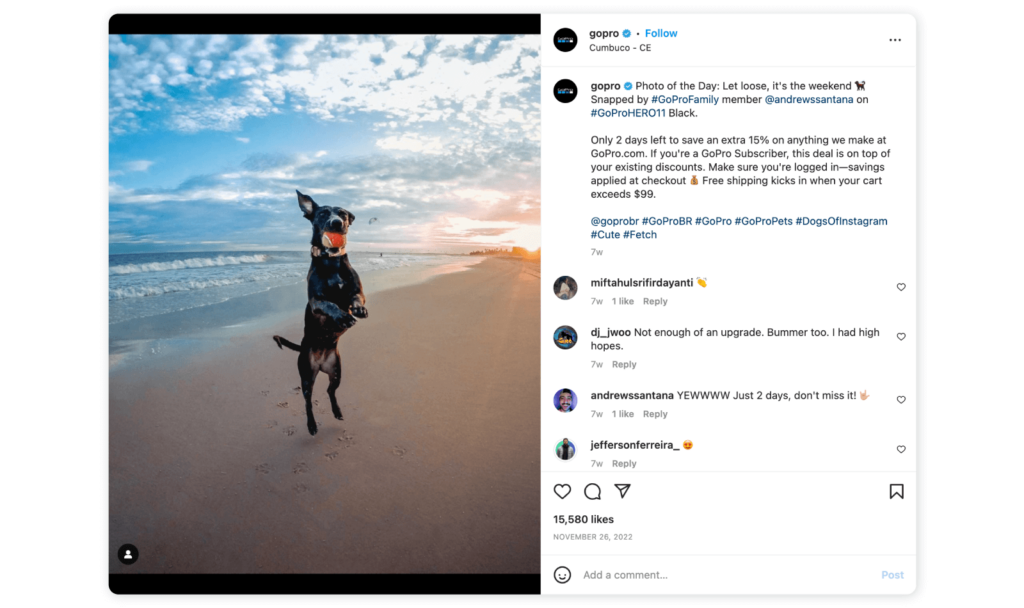
Lululemon
Canadian athleisure brand Lululemon is best known for its premium leggings and devoted fanbase. Lululemon brand loyalists are next level, making UGC a fantastic asset for the brand.
To leverage its followers’ devotion and expand its reach, Lululemon asked brand loyalists to share photos of them in their Lululemon clothing using the hashtag #thesweatlife. The results were pretty impressive.
Fans of the brand were quick to jump on the hashtag, creating a bounty of easy-to-find UGC for the brand to work with. That’s not all. The brand’s iconic #sweatlife hashtag also significantly drove reach and brand awareness. And the best part? It was totally free.
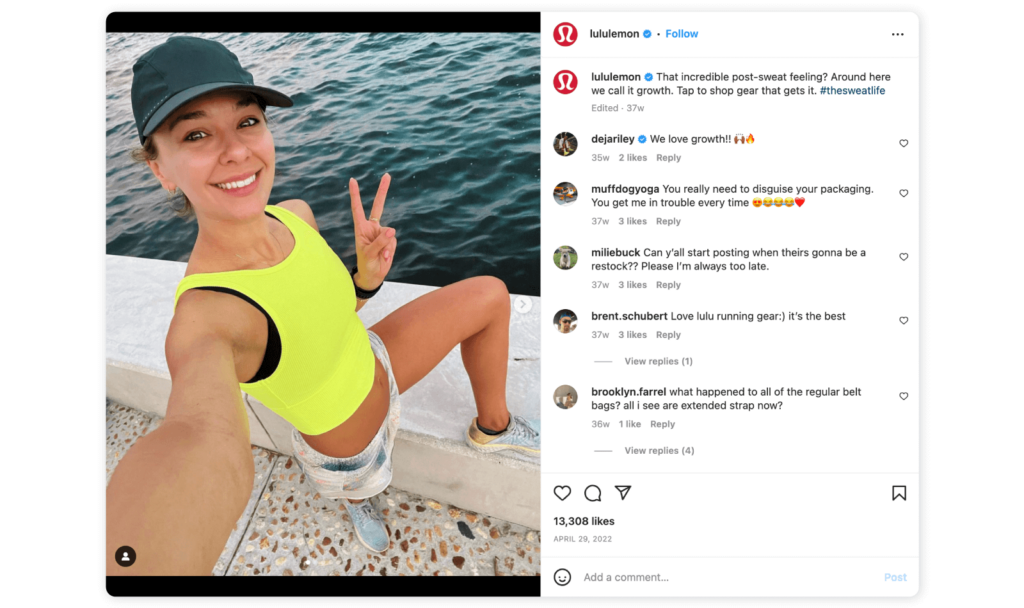
Bumble
If there’s one thing we can learn from the dating app Bumble, it’s that video content reigns supreme.
Bumble shows brands how UGC is done by sharing dating videos created by their followers. The videos are cheeky, irreverent, and totally on brand.
This is a brand that knows video content performs best, garnering high engagement rates and getting its audience talking.
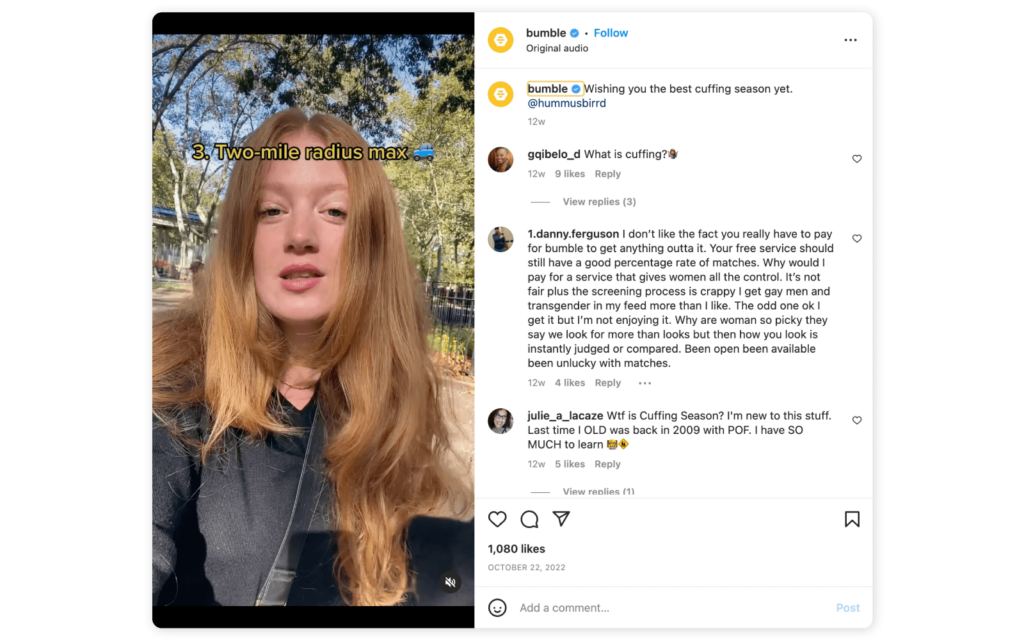
Fenty
Fenty Beauty has a strong brand identity. Since the beauty brand burst onto the scene, it has become known for its dedication to representation and inclusivity.
And Fenty has stayed true to its diverse roots when it comes to UGC. After a quick scroll on its newsfeed, you’ll see that the brand reposts makeup tutorials and product reviews from a diverse range of users.
Not only does this fit perfectly with the brand’s values and ethos, but it makes its products more accessible to a wider audience. Diversity is at the core of everything Fenty does, making this UGC strategy authentic and effective.

Adobe
Adobe is all about powering its users’ creativity and imagination. With that in mind, the brand focuses on how its customers use Adobe to create digital art more so than the product itself.
A quick glance at Adobe’s Instagram feed will reveal a slew of illustrations, quotes about imagination, and cutting-edge animations. Where Adobe gets really clever is how it repurposes UGC.
The brand regularly reposts users’ creations, simultaneously showcasing what the product can do and spotlighting emerging talent. Adobe always makes sure to tag its community members, celebrating their work and seamlessly aligning the brand with creativity and innovation. The message is clear, the only limit to Adobe is your imagination.
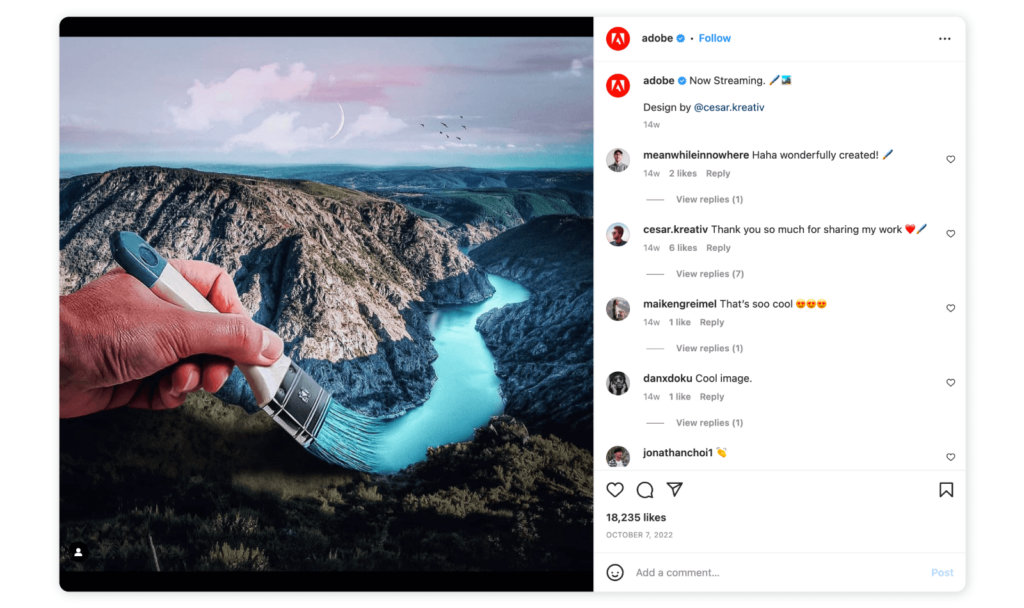
Worth a read 👉 Social media trending content ideas
How to monitor User-Generated Content
We’ll be honest; finding and monitoring high-quality UGC content can be time-consuming. That’s where a social media management tool like Sociality.io can save the day. With Sociality.io, you can automate social listening and easily monitor all UGC content.
On top of managing all of your social media posts, you can use the tool to find and organize UGC. The robust analytics make it easy to find tags, brand mentions, and hashtags across your brand’s socials, so you can discover and schedule the best UGC.
The data gives valuable insight into what UGC content is resonating with your followers, empowering you to make more informed decisions going forward.
How to integrate it into a social media strategy
Sharing UGC just for the sake of it probably won’t garner the results you’re looking for. If you really want to reap the rewards, you will need to integrate UGC into your social media marketing strategy.
Here’s how.
Start with the why
Define the purpose of your UGC strategy. Do you want to showcase a product? Do you want to provide customer education? Is it to inspire your audience?
Understanding the purpose behind your UGC is the first step in setting goals. Plus, the quality of UGC content will be much higher when your followers understand what you’re aiming for (more on that below).
Once you have clear goals, you’re going to want to create a strategy.
Align UGC with marketing goals
Take a long hard look at your social media strategy. How can you align UGC content with your brand’s marketing goals?
Use this information to come up with a clear sentence that defines what kind of UGC content you want from your users. This will ensure that UGC is aligned with your goals, consistent, and effective.
Share your UGC wishlist
Now that you know what type of UGC you’re looking for, you need to communicate this information to the people who interact with your brand. Namely, customers, followers, employees, and brand fans.
Share your UGC requirements on your social media bios, website, product packaging, and anywhere else you can think of.
Remember, UGC should work towards your wider social media goals. Do you want to boost brand awareness? Or perhaps your main objective is to drive sales. Whatever your goals, your UGC campaign should be aligned.
Keep it real
The whole point of user-generated content is that it’s honest and authentic. With that in mind, it makes sense to strike a balance between salesy content and UGC.
This can be as simple as weaving UGC in between product shots to make your brand’s feed seem genuine and trustworthy.
Get creative
UGC is a prime opportunity to think outside the box and get your customers to engage. Coming up with innovative UGC ideas that represent your brand will create a lot more buzz and build a sense of community in your audience.
Encourage your users to show off their personality and make a splash with their UGC.
Take Red Bull. Their Instagram account is all about community, with fans of the brand connecting over their love of an active lifestyle (and a shot of adrenaline).
Red Bull regularly reposts images on its news feed of its customers, pushing the limits of their bodies and having a blast while doing it.
In doing so, when Red Bull customers think of adrenaline-packed physical activities, they think of the brand. Pretty smart, huh?
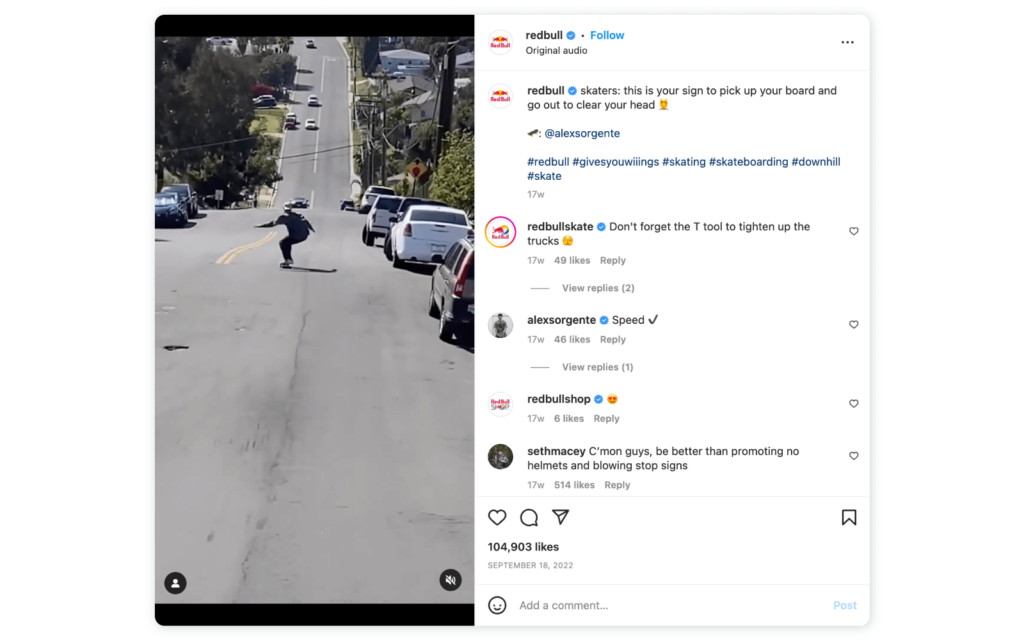
In closing…
We live in an age where content is king. But keeping up with your followers’ demands for high-quality content is no easy feat. That’s precisely why user-generated content is such a coup for your brand. You can share brand-specific, organic content with your users with minimal effort (especially if you use a social media management tool to manage UGC).
Leveraging UGC not only fosters a deeper connection with your audience, but also sparks brand trust. Stylized ads are out. Customers want raw, authentic content. UGC hits the mark because it’s the social media equivalent of word-of-mouth referrals. Plus, who better vouch for your brand than its biggest fans?
To cut a long story short, if your brand isn’t leveraging user-generated content, consider this your sign to start.
